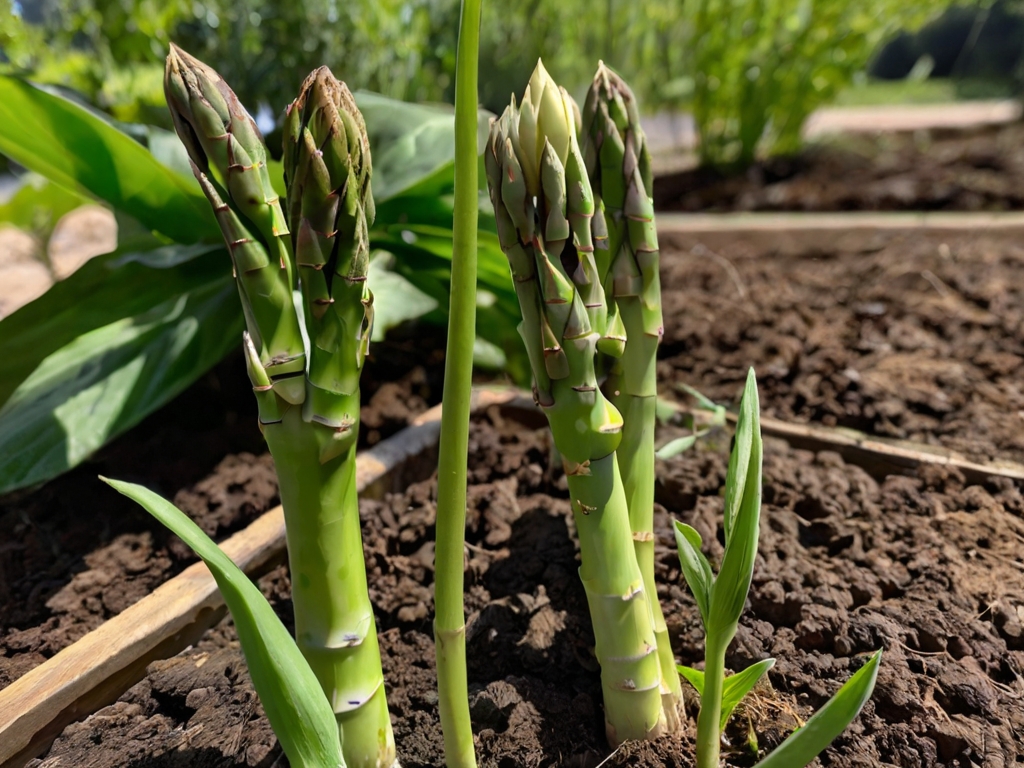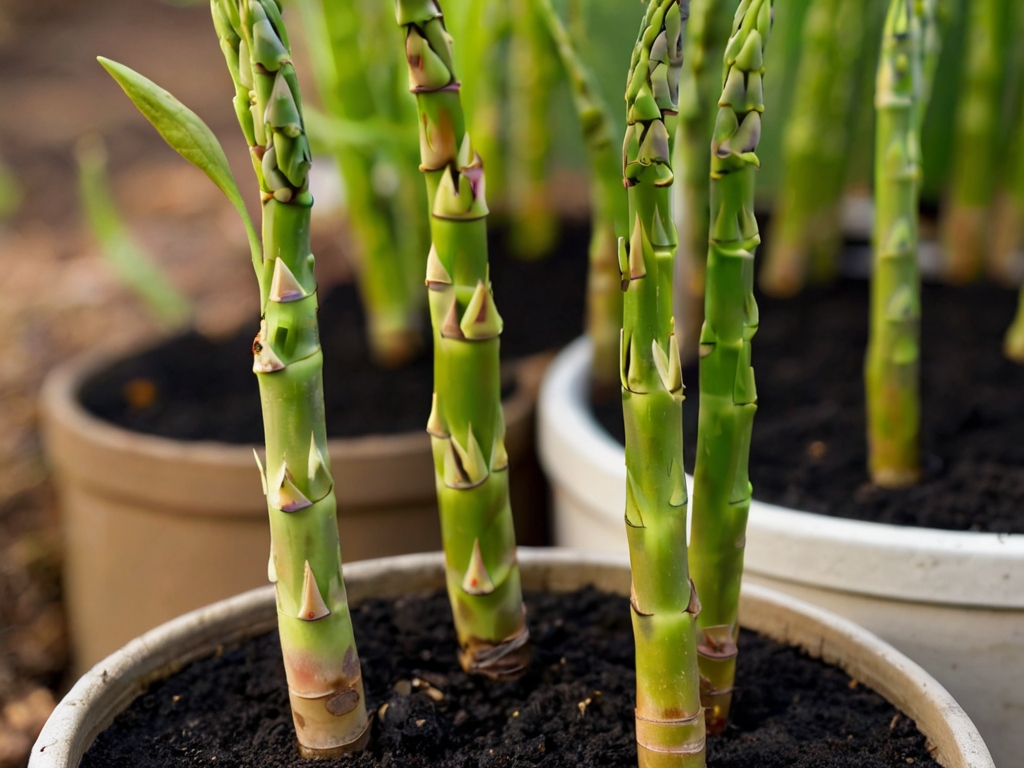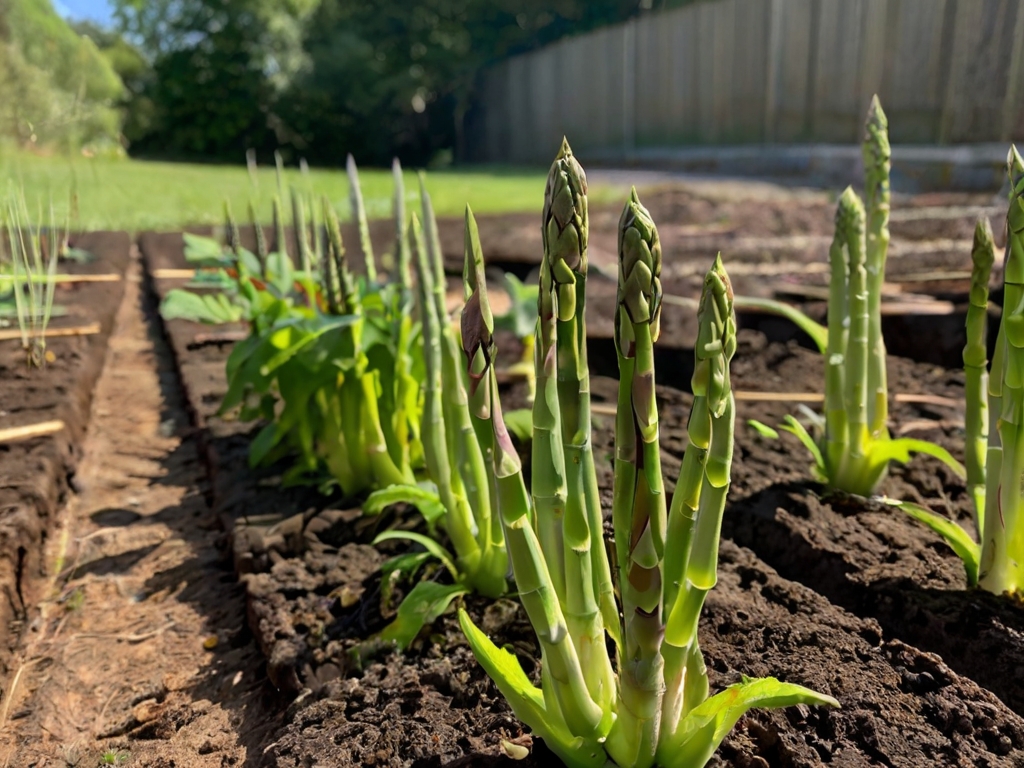Asparagus, a perennial vegetable known for its tender shoots, can greatly benefit from companion planting. Growers can strategically select companion plants to increase yield and quality, reduce pest and disease problems, improve soil health and fertility, and promote biodiversity in their gardens.
Table of Contents
- Benefits of Companion Planting for Asparagus
- Choosing the Right Companion Plants for Asparagus
- How to Plant Companion Plants with Asparagus
- Common Companion Plants for Asparagus
- Companion Plants that Deter Pests from Asparagus
- Companion Plants that Attract Beneficial Insects for Asparagus
- Companion Plants that Improve Soil Health for Asparagus
- Tips for Maintaining a Successful Companion Planting System for Asparagus
- The Importance of Companion Planting for Asparagus
- FAQs
Benefits of Companion Planting for Asparagus

Increased yield and quality
One of the main benefits of companion planting for asparagus is increased yield and quality. Certain companion plants can help improve the growth and development of asparagus by providing shade, attracting beneficial insects, or repelling pests. For example, planting tomatoes or peppers near asparagus can provide shade during hot summer months, preventing the asparagus ferns from wilting and reducing water stress. Additionally, herbs like parsley, basil, thyme, and sage can enhance the flavour of asparagus when planted nearby.
Reduced pests and diseases
Companion planting also helps reduce pest and disease problems in asparagus. Some companion plants have natural pest-repellent properties that can deter common pests like asparagus beetles and aphids. For instance, planting garlic, onions, or chives near asparagus can help repel asparagus beetles, while planting dill or fennel can attract beneficial insects that prey on aphids.
Improved soil health and fertility
Companion planting improves soil health and fertility in asparagus beds. Certain plants can fix nitrogen from the air and make it available to other plants. Legumes like beans and peas are excellent nitrogen-fixers and can help replenish the soil with this essential nutrient. Plants like comfrey and buckwheat have deep root systems that can break up compacted soil and improve its structure.
Biodiversity and sustainability
Lastly, companion planting promotes biodiversity and sustainability in the garden. By planting a diverse range of plants, asparagus growers can create a balanced ecosystem that supports a variety of beneficial insects, birds, and other wildlife. This helps maintain a natural balance and reduces the need for chemical pesticides or fertilizers.
Choosing the Right Companion Plants for Asparagus

When selecting companion plants for asparagus, there are several factors to consider.
Similar growing requirements
First, choosing plants with similar growing requirements in terms of sunlight, water, and soil conditions is important. Asparagus prefers full sun and well-drained soil, so companion plants should also thrive in these conditions.
Compatibility
Compatibility is another important factor to consider. Some plants have allelopathic properties, meaning they release chemicals that can inhibit the growth of other plants. To prevent competition and stunted growth, it is best to avoid planting incompatible plants together.
Good companion plants for asparagus include herbs like parsley, basil, thyme, and sage, which can enhance the flavour of asparagus when planted nearby. Vegetables like tomatoes, peppers, beans, and peas can provide shade and support for asparagus plants. Flowers like marigolds, nasturtiums, and calendula can attract beneficial insects and add beauty to the garden.
On the other hand, some plants should be avoided as companions for asparagus. These include members of the allium family (such as onions and garlic), which can stunt the growth of asparagus due to their allelopathic properties. Additionally, plants requiring heavy watering or invasive root systems should be kept away from asparagus to prevent competition for resources.
How to Plant Companion Plants with Asparagus
Proper planning and preparation are essential to successfully incorporating companion plants with asparagus. Start by selecting companion plants that are compatible with asparagus and meet its growing requirements. Consider each plant’s size and growth habit to ensure they will not overshadow or crowd the asparagus plants.
There are several planting techniques. One method is to interplant the companion plants directly among the asparagus plants. This can be done by spacing the companion plants evenly throughout the asparagus bed, ensuring they have enough room to grow without competing.
Another method is to create separate planting areas for the companion plants. This can be done by dedicating specific garden sections or raised beds for companion planting. This allows for easier maintenance and care and better control over pests and diseases.
Maintenance and care are important aspects of companion planting with asparagus. Regular weeding, watering, and mulching are necessary to ensure the health and productivity of the asparagus and companion plants. It is also important to monitor for pests and diseases and take appropriate measures to control them, such as using organic pest control methods or removing affected plants.
Common Companion Plants for Asparagus
Several common companion plants work well with asparagus. Herbs like parsley, basil, thyme, and sage are excellent choices, as they can enhance the flavour of asparagus when planted nearby. These herbs also attract beneficial insects like bees and butterflies, which can help with pollination.
Vegetables like tomatoes, peppers, beans, and peas can also be great companions for asparagus. Tomatoes and peppers provide shade during hot summer months, preventing the asparagus ferns from wilting. Beans and peas are nitrogen-fixing legumes that can help replenish the soil with this essential nutrient.
Flowers like marigolds, nasturtiums, and calendula add beauty to the garden and attract beneficial insects. Marigolds repel nematodes and other soil-borne pests, while nasturtiums attract aphids away from asparagus. Calendula attracts pollinators and has natural antifungal properties that can help prevent diseases in asparagus.
Companion Plants that Deter Pests from Asparagus
One of the advantages of companion planting for asparagus is the ability to deter pests naturally. Several plants have pest-repellent properties and can help protect asparagus from common pests like asparagus beetles, aphids, and other insects.
Garlic, onions, and chives are excellent choices for repelling asparagus beetles. These plants release strong odours that deter the beetles from feeding on the asparagus plants. Additionally, planting dill or fennel near asparagus can attract beneficial insects like ladybugs and lacewings, which prey on aphids.
Tansy is another plant that can help repel pests from asparagus. Its strong scent repels a wide range of insects, including asparagus beetles, aphids, and cabbage worms. However, it is important to note that tansy can be invasive in some regions, so it should be planted with caution.
Companion Plants that Attract Beneficial Insects for Asparagus
In addition to repelling pests, companion plants can also attract beneficial insects that help control pest populations naturally. These beneficial insects include pollinators like bees and butterflies and predators and parasitoids that prey on pests.
Dill and fennel are excellent choices for attracting beneficial insects to the garden. Their flowers provide nectar for bees and butterflies, and their foliage attracts beneficial insects like ladybugs and lacewings, which feed on aphids and other pests.
Yarrow is another plant that attracts a wide range of beneficial insects. Its flowers provide nectar for bees and butterflies. At the same time, its foliage attracts predatory insects like hoverflies and parasitic wasps, which prey on aphids and other pests.
Clover is a nitrogen-fixing cover crop that improves soil health and attracts beneficial insects. Its flowers provide nectar for bees and other pollinators. At the same time, its foliage attracts predatory insects like ground beetles, which feed on pests like slugs and snails.
Companion Plants that Improve Soil Health for Asparagus
Companion plants can also help improve soil health and fertility in asparagus beds. Certain plants can fix nitrogen from the air and make it available to other plants. Additionally, some plants can accumulate nutrients deep in the soil, making them available to shallow-rooted plants like asparagus. Finally, certain plants have deep root systems that can break up compacted soil and improve its structure.
Legumes like beans and peas are excellent nitrogen-fixers and can help replenish the soil with this essential nutrient. These plants have a symbiotic relationship with nitrogen-fixing bacteria that live in nodules on their roots. The bacteria convert atmospheric nitrogen into a form that plants can use, thereby enriching the soil with nitrogen.
Comfrey is another plant that can improve soil fertility. Its deep root system allows it to accumulate nutrients in the soil, released when the plant is cut back and used as mulch or compost. Comfrey is also a dynamic accumulator, accumulating various nutrients in its leaves.
Buckwheat is a fast-growing cover crop that can improve soil structure. Its fibrous root system helps break up compacted soil and improves drainage and aeration. When cut back, buckwheat also produces a large amount of organic matter, which can be incorporated into the soil to improve its fertility.
Tips for Maintaining a Successful Companion Planting System for Asparagus
There are several tips to remember when maintaining a successful companion planting system for asparagus.
Crop Rotation
First, practice crop rotation and succession planting to prevent the buildup of pests and diseases. Asparagus should be rotated with other crops every few years to prevent the buildup of soil-borne diseases like fusarium wilt.
Mulching
Mulching is also important for conserving moisture, suppressing weeds, and improving soil health. Organic mulches like straw or wood chips can be applied around the base of asparagus plants to help retain moisture and suppress weed growth. Additionally, mulches can break down over time and add organic matter to the soil, improving fertility.
Watering
Regular watering is essential for the health and productivity of asparagus and companion plants. Asparagus requires consistent moisture, especially during dry periods. Companion plants may have different water requirements, so it is important to water them accordingly.
Regular Inspections
Monitoring and controlling pests and diseases is another important aspect of maintaining a successful companion planting system for asparagus. Regularly inspect plants for signs of pests or diseases and take appropriate measures to control them. This can include using organic pest control methods like handpicking pests, insecticidal soaps or oils, or introducing beneficial insects.
The Importance of Companion Planting for Asparagus
In conclusion, companion planting is a valuable technique for growing asparagus that offers numerous benefits. Asparagus growers can increase their yield and quality, reduce pest and disease problems, improve soil health and fertility, and promote garden biodiversity by selecting the right companion plants.
Proper planning and preparation are the key to successful companion planting with asparagus. By considering factors like compatibility, growing requirements, and pest-repellent properties, growers can create a balanced ecosystem that supports the growth and development of both asparagus and companion plants.
Asparagus growers are encouraged to incorporate companion planting into their cultivation practices to maximize the potential of their crops. Future research and innovation in companion planting can further enhance the benefits and effectiveness of this technique, leading to more sustainable and productive asparagus cultivation methods.
FAQs
Why is companion planting important for asparagus?
Companion planting can help asparagus plants grow healthier and more productive by improving soil quality, deterring pests, and attracting beneficial insects.
What are some good companion plants for asparagus?
Good companion plants for asparagus include tomatoes, parsley, basil, marigolds, and nasturtiums.
What are some plants that should not be planted near asparagus?
Plants not planted near asparagus include garlic, onions, and potatoes.
How do companion plants improve soil quality for asparagus?
Companion plants can improve soil quality for asparagus by fixing nitrogen, a vital nutrient for asparagus growth.
How do companion plants deter pests from asparagus?
Companion plants can deter pests from asparagus by emitting strong scents that repel pests or by attracting beneficial insects that prey on pests.
How do companion plants attract beneficial insects to asparagus?
Companion plants can attract beneficial insects to asparagus by providing them with food and shelter. These insects can help control pests and pollinate asparagus flowers.

